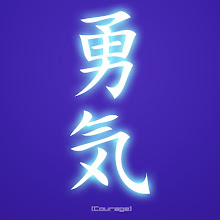Original Artical from NGAccording to the National Geographic reported last week, on Aug. 11 , Huge Solar storm triggered spectacular Auroras. More surprisingly, this phenomenon has remained for several days. Look the following these astronomical wonders, you will marvel at the uncanny workmanship of nature. |
|
Purple HazeSeen from the shores of Lake Superior, an August 4 aurora glows green topped with blueish-purple. Auroras glow in different colors based on the types of atoms in the atmosphere and how high they are in the sky. Humans mostly see auroras in shades of yellowish-green. That's because the eye sees a light show created by oxygen atoms at lower altitudes, about 62 to 186 miles (100 to 300 kilometers) above the surface. Blues and purples are created by lighter gases such as hydrogen and helium, while low-level nitrogen can add red fringes to the bottoms of green auroral curtains. |
Sky Glows GreenClouds over Manitoba, Canada, are bathed in green light from an August 4 aurora. The solar ejections that cause auroras can also create geomagnetic storms that can affect spacewalking astronauts, Earth-orbiting satellites, and even communications and power systems on the ground. But like the previous solar storm, which was strong but relatively slow, the oncoming burst of charged particles shouldn't create significant problems for people, according to the website SpaceWeather.com. Instead, the site says, "high-latitude sky-watchers should be alert for auroras when the cloud arrives, probably on August 10." |
"Superior" AuroraThe view from a Michigan shore of Lake Superior included multicolored auroras on August 3, as seen in a panoramic picture. A solar storm headed for Earth isn't a guarantee of auroras. Without more sun-watching satellites, scientists are hard-pressed to know the exact effects a coronal mass ejection will have on Earth's atmosphere. Last week Leon Golub of the Harvard-Smithsonian Center for Astrophysics had put the odds of the August 1 solar flare producing auroras at about 50-50. |
Oslo Light ShowGreen light curls over Oslo, Norway, August 4 in an auroral display caused by last Sunday's coronal mass ejection. In the Northern Hemisphere, auroras are more commonly seen at high latitudes near the Arctic Circle, such as northern Alaska, Canada, and Scandinavia. But scientists predicted that last Sunday's strong burst would bring the light show to slightly lower parts of the globe. In fact, sky-watchers were snapping pictures of auroras as far south as Oslo, Lake Manitoba in Canada, and Lake Superior (map) in the United States. |
Aurora Over QuebecAuroras create green curtains of light August 4 over the Rupert River in Waskaganish (see map), a Cree Nation community in Quebec, Canada. Last week's northern lights—which lasted a few days—were products of a large burst of plasma, or charged gas, from the sun known as a coronal mass ejection. A NASA orbiter called the Solar Dynamics Observatory saw last Sunday's eruption, which was aimed directly at Earth and sparked predictions of a shimmering sky show. Now it seems aurora fans may be in for another treat: A solar flare spotted Saturday by NASA's Solar and Heliospheric Observatory was even more powerful than the previous eruption. Although this time the bulk of the plasma burst isn't aimed right at Earth, scientists say it could still trigger another round of colorful auroras. |
Beach AuroraAn aurora created by last week's coronal mass ejection glimmers over Laurentian Beach, on the shores of Lake Manitoba in Canada (map), on August 6. Auroras happen when energized particles from the sun wash over Earth and flow down the planet's magnetic field lines toward the Poles. Along the way, the charged partices bang into nitrogen, oxygen, and other atoms in our atmosphere. The charged solar particles give Earth's atmospheric atoms an energy boost, which then gets released as light, producing the shimmering curtains of greens, reds, blues, and other colors. Undergoing MyBlogLog Verification |
skip to main |
skip to sidebar
Pages
Total Pageviews
Blog Archive
-
▼
2010
(50)
-
▼
August
(10)
- Machete: Betray, Revenge, Violence, Blood, Sex...a...
- 5 Points to Revive Salt’s Husband in Salt Ⅱ!
- Inhabitat's Week in Green of July
- Kia's 'Pop' electric car concept makes our inner u...
- Eight of the Coolest Aqua Rides in our World
- iPhone 4 unlock available now!(with Video)
- Huge Solar Storm Triggers Unusual Auroras
- James Cameron Talks Avatar's Theatrical Re-Release
- Valhalla Rising—An Obscure Norse Mythology
- Discount for Hot Summer--Download Mobile Converter...
-
▼
August
(10)
Powered by Blogger.



0 comments:
Post a Comment